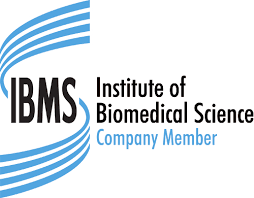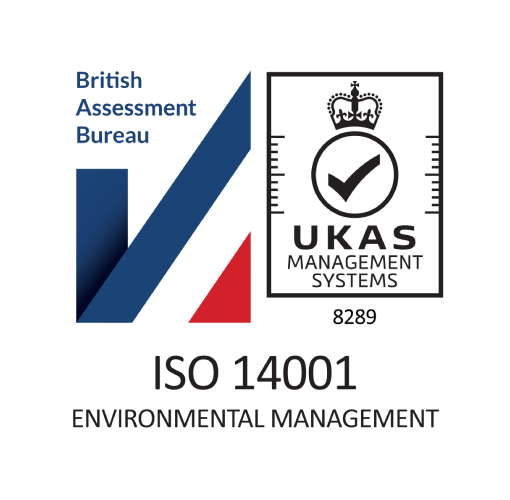Hepatitis C testing services to the wider NHS
Our exciting new partnership with LG Energy Group (LGE)
Please get in touch, we're ready to help
12 August 2019
Author | Admin
Hepatitis C testing services to the wider NHS
Founded in 2012, the EPA has become a centre of excellence for pathology – particularly virology – providing centralised laboratory medicine for the Norfolk and Waveney region. It has selected state of the art equipment from Vela Diagnostics which incorporates Ion Torrent semiconductor sequencing to provide rapid turnaround of results for clinicians and their patients. It is currently the only laboratory in the UK to put this kind of a high tech solution into routine use.
Aimed at other acute NHS Trusts, CCGs and private healthcare providers, the new service will comprise a whole package involving fast testing, clinical interpretation along with guidance and advice about drug selection. Pricing will be based on a per test fee.
Mainly affecting the liver, Hepatitis C is the only blood born virus which is a curable infection with success rates of between 92-95%. Although a national data set is unavailable, most recent estimates by Public Health England (PHE) show that 160,000 people are living with chronic Hepatitis C virus infections in the UK.
The use of next generation sequencing assays enables detailed analysis of the genetic material of the Hepatitis C virus (HCV) to confirm its strain – predominantly genotypes 1 and 3 in the UK – and the determination of resistance mutations. This information is crucially important for clinicians so they can then prescribe the optimum mix of drugs to treat the virus.
Dr Samir Dervisevic, a Consultant Virologist and the Clinical Lead for Virology at the EPA’s Microbiology Department explains, “In May 2016, the UK signed up to the World Health Organization strategy on viral hepatitis which commits participating countries to the elimination of Hepatitis C virus as a major public health threat by 2030. In England, HCV treatment is centrally funded and the NHS England direct acting antiviral (DAA) treatment programme continues to be rolled out with several medications authorised. Given this, ascertaining the genotype strain before treatment starts is recommended especially as the duration of treatment among other factors depends on the virus genotype.”
Samples collected from patients in Norfolk used to be referred to a private laboratory for HCV genotyping. When drugs were prescribed but the treatment failed – which could be due to virus resistance to a particular directly acting antiviral drug – blood samples were then sent to the Reference Laboratory in London for resistance profiling. Due to the turnaround time, some patients actually had to wait a prolonged period in order to receive the results and be re-treated.
This time consuming and long winded process – often taking months – slowed down the effective delivery of clinical services. Furthermore, samples were split, testing was overly costly and – most importantly – there was a significant distress for patients given the time involved.
Dr Dervisevic adds, “We’ve opted out of referring samples to these two external laboratories and instead invested in the latest cutting edge solution of our own which gives us automated workflow from sample to results within just two days so that patients get the right treatment fast. We’re now happy to offer our clinical colleagues access to this modern technology so that they receive a quick, accurate and reliable diagnostic service combined with clinical backup and expertise.”
With a small physical footprint, the compact Vela Diagnostics technology – a combination of a Sentosa SQ Genotyping Assay and Sentosa ST401 instrument unit – is perfect for use in a busy space constrained laboratory setting. The EPA has installed both working in close collaboration with its established vendor neutral managed services partner, Genmed.
The use of a managed services contract (MSC) has meant that the EPA has been able to introduce the new test equipment rapidly and benefit from a pay-to-use approach.
Reenesh Prakash, EPA microbiology network manager explains, “The contract we’ve signed is an interesting one. We’ve agreed with Genmed and Vela Diagnostics the volume of work we’ll deliver over time and adopted a tax efficient MSC where we’re charged per reportable test.”
In addition, a MSC provides the EPA with a host of other benefits. First, it is able to reclaim VAT to give the organisation a 20% budget boost. Second, Genmed provides all administrative support related to arranging equipment maintenance and the ordering of consumables. And third, it minimises operational risk as Genmed takes responsibility for equipment uptime with a SLA set at 90% availability.
Robin Modak, Genmed’s chief executive officer, said, “We’ve been able to put in place the best, most modern laboratory equipment for the EPA with an innovative and flexible charging model. The EPA’s primary duty is assay performance and the provision of care. But it is the patient who is the real winner from all this – as one would hope – as the time from test to accurate diagnosis has been radically reduced.”
Related articles
Introducing Energy Services
08 June 2022
Author | Admin
Genmed is pleased to announce our partnership with LG Energy Group (LGE).
South West London Elective Orthopaedic Centre and Genmed are HSJ Partnership Award Winners
29 March 2022
Author | Admin
On 24 March 2022, Genmed and South West London Elective Orthopaedic Centre (SWLEOC) were chosen as...
Genmed Procurement Services
16 March 2022
Author | Admin
Genmed can manage rapid and efficient procurement projects for you. We can add capacity and...
IFRS 16 – Does this put a Managed Service Contract (MSC) on balance sheet?
22 February 2022
Author | Admin
Done properly the MSC remains off-balance sheet. There are exceptions (see below) but, for the most...
MES versus MSC
22 February 2022
Author | Admin
Managed Equipment Services (MES) and Managed Service Contract (MSC) are different. Very different....
Genmed Finalists in HSJ Partnership Awards 2022
24 January 2022
Author | Admin
Genmed is delighted to announce that their partnership with South West London Elective Orthopaedic...
New surgery capacity for South West London Elective Orthopaedic Centre (SWLEOC)
02 August 2021
Author | Admin
A new theatre at the South West London Elective Orthopaedic Centre (SWLEOC) opened in July 2021...
Cambridge University Hospitals NHS Foundation Trust – East Genomics Laboratory Hub
16 June 2021
Author | Admin
Genmed is delighted to announce a four-year collaboration with Cambridge University Hospitals NHS...
Case Study – Norfolk and Norwich University Hospitals NHS Foundation Trust
13 July 2020
Author | Admin
The Gastroenterology department at NNUH moved endoscopic screening services to the...
Case Study – South West London Elective Orthopaedic Centre (SWLEOC)
10 July 2020
Author | Admin
Genmed is responsible for ensuring the availability of equipment in all areas of the Centre...
Procurement must become centre stage in the NHS
28 May 2020
Author | Admin
The English lexicon has changed markedly in light of the worldwide coronavirus pandemic with...
New state-of-the-art endoscopy centre
10 December 2018
Author | Admin
The Gastroenterology department at the Norfolk and Norwich University Hospital (NNUH) has moved...
Vendor-neutral managed services for two NHS Trusts
19 July 2018
Author | Admin
Launched in 2012, the Chester and Wirral Microbiology Service (CWMS) is a collaboration between...










